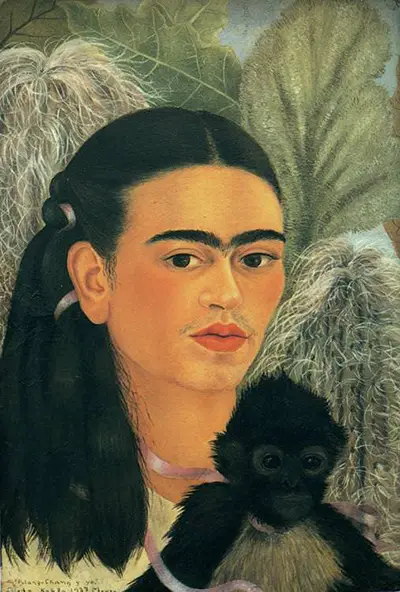This was one of 55 self portraits Kahlo produced throughout her life, and was painted in oil on board.
The monkey in this self portrait is Fulang-Chang, one of many spider monkeys (and other birds and animals) kept by Kahlo as pets.
The positioning of the pair is often likened to Renaissance paintings depicting the Madonna and Child, leading to speculation that Kahlo's monkeys were a replacement for the children she and husband, muralist Diego Rivera, were unable to conceive.
Others speculate that this painting represents the strong bond Kahlo felt with animals.
The fact that she chose a background of forest plants, and painted a lavender ribbon winding between her and Fulang-Chang does seem to emphasise this sense of connection, and adds to the overall peaceful feeling of the work, in which Kahlo seems at one with nature.
In Self Portrait with Thorn Necklace and Hummingbird painted in 1940, we see more of a difficult relationship between Kahlo and nature, perhaps reflecting the physical pain she lived with after a serious accident when she was just 18 years old.
Fulang-Chang and I was exhibited at the Julien Levy Gallery, NY in 1938. Reviews were positive, but reflected the sexism that was rife in those days: Time magazine, for example, referred to 'Little Frida's pictures'. The painting, however, displays a strength and power in Frida's steady gaze and her unflinching portrayal of body and facial hair.
This celebration of hair continues in the portrayal of both the monkey and the cacti in the background.
Interestingly, years after its exhibition, Kahlo made a mirror to accompany this painting and she presented both in elaborate matching frames. She then gifted the portrait and mirror to her close friend, Mary Sklar, whom she had first met in Mexico in 1935, telling Mary that they could now always be together. Sklar bequeathed the painting to MoMA where it is now displayed as part of the Painting and Sculpture collection.

